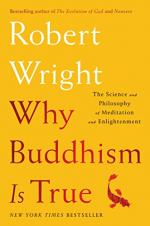
|
| Name: _________________________ | Period: ___________________ |
This test consists of 5 multiple choice questions, 5 short answer questions, and 10 short essay questions.
Multiple Choice Questions
1. Which of the three schools of meditation supports the idea that a critical distance of separation between the self and individual thoughts will give the conscious self more control?
(a) Tibetan.
(b) Vipassana.
(c) Zen.
(d) Western.
2. The author states that even perceptual judgments are a layer of meaning imposed onto what?
(a) Oneself.
(b) The outside world.
(c) Inquiry.
(d) Perception.
3. The author states that rather than seeing the world as hopeless and empty, enlightened and otherwise accomplished meditators see each individual object, person, and experience as empty in the sense that it does not have a preset what?
(a) Connotation.
(b) Truth.
(c) Worth.
(d) Value.
4. What system within the body is responsible for rewards?
(a) The digestive system.
(b) The endocrine system.
(c) The cardiovascular system.
(d) The dopamine system.
5. The Capgras delusion causes an afflicted person to think that a loved one is what?
(a) An enemy.
(b) Homicidal.
(c) Habitually lying.
(d) An imposter.
Short Answer Questions
1. The author compares self-discipline to what part of the human body?
2. What problem does the author say afflicts him when he is trying to work?
3. What object does the author use as a metaphor for the feelings that connect one’s conscious mind and one’s thoughts?
4. What sound does the author refer to in his personal anecdote about reducing negative feelings?
5. What does the author NOT use as an example of the indirect evidence received by the human brain?
Short Essay Questions
1. How does the author characterize the emotion of jealousy?
2. What emotion is one of the most studied in relation to the phenomenon of modules governing behavior and why?
3. What is the purpose for observing one's own thoughts within a meditation session?
4. What four themes does the author state are generally focused upon within the passing thoughts observed during meditation?
5. Discuss an instance when the author points out a potential pitfall of a regular meditation practice.
6. For what purpose does the author discuss his disagreement with a prominent meditation teacher?
7. What does the author mean when he claims that humans are essentialists?
8. Discuss the author's perspective of how indulging one's craving once can lead to future indulgences?
9. Describe Plato's use of the horse and charioteer analogy to comment on the relationship between feelings and the rational self.
10. In what way does the author use the appeal of ethos within the chapter entitled "Encounters with the Formless"?
|
This section contains 1,229 words (approx. 5 pages at 300 words per page) |

|




